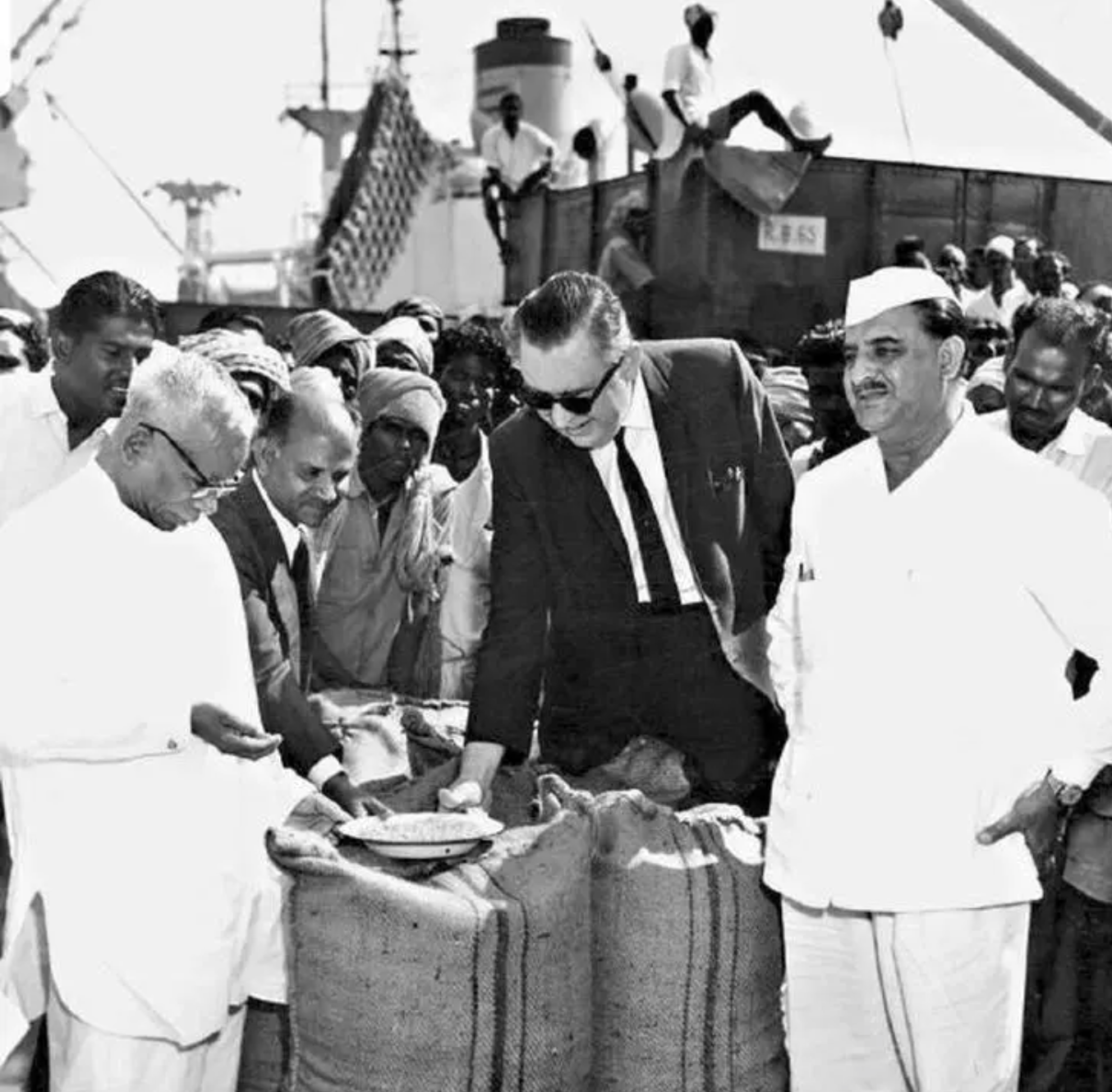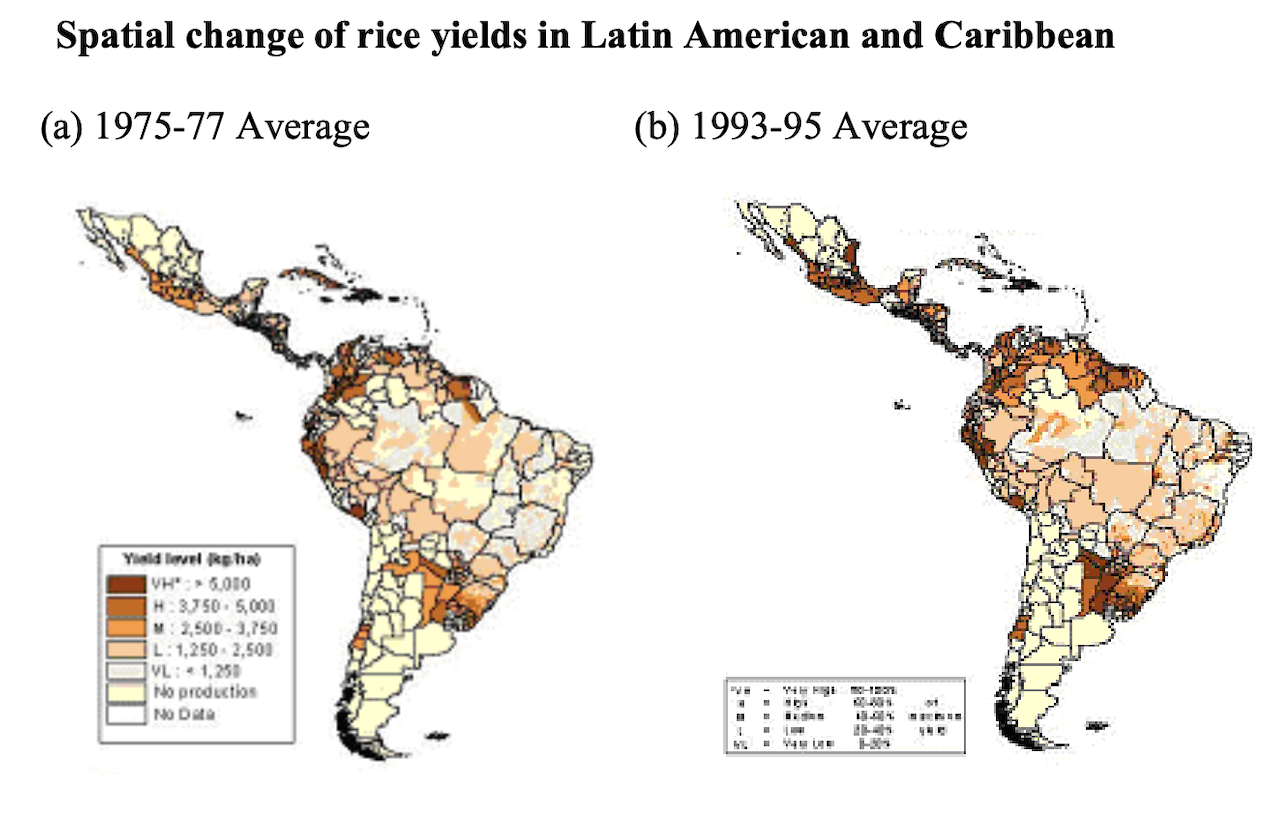India
Throughout the 1950s, India was the victim of stagnant crop yields but rapid population growth, putting the nation at risk of famine. The USAID quickly stepped in and introduced HYV crops to Punjab and other regions of India. The HYVs significantly improved wheat and rice production, saving the country from famine. By 1970 India increased their wheat production to over 20 million tons, up from 10 million in 1960.

